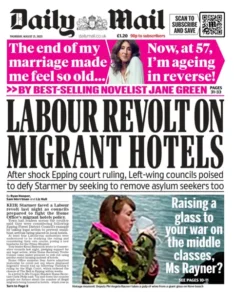Title: Impact of Trump Tariffs on South Korea’s K-Beauty Industry
In recent years, South Korea has become a powerhouse in the global beauty market, largely due to its innovative skincare and cosmetic products known as K-beauty. However, the imposition of tariffs by former US President Donald Trump poses significant challenges to this thriving industry. The K-beauty sector has become particularly popular in the United States, where consumers have reportedly spent around $1.7 billion on South Korean skincare and beauty products in 2024 alone, marking a significant growth of over 50% compared to the previous year. The appeal of K-beauty can be largely attributed to its quality ingredients and unique formulations, which often incorporate elements uncommon in Western products, such as snail mucin and heartleaf.
Despite the K-beauty revolution, the new 15% import tax imposed by the Trump administration on South Korean goods threatens to elevate costs for consumers and businesses alike. Though downstream from the initially proposed 25% levy, the implications are still significant, as many fear that consumers might start to reconsider their purchasing patterns. Pearl Mak, a 27-year-old graphic designer based in the US, attests to this concern; she notes that roughly 95% of her skincare routine consists of K-beauty products. The loyalty among consumers like Mak demonstrates the strong connection between South Korean products and their customer base, yet the uncertainty created by tariffs is evident.
Orders at K-beauty retailers have seen dramatic shifts since the announcement of the tariffs. For example, Santé Brand reported a nearly 30% increase in orders immediately following the tariff news. Cheyenne Ware, the founder of the company, emphasized that consumers became strategic in their shopping as a means to mitigate the effects of higher prices. Likewise, Winnie Zhong, manager of another retailer, Senti Senti, noted an uptick in orders as suppliers alerted retailers to “stock up” before implementing the tariffs. This heightened demand amid uncertainty could lead to price increases, affecting how many products consumers may feel comfortable purchasing.
The landscape for K-beauty products reveals a dichotomy in response to tariffs. Larger corporations can often absorb the costs associated with tariffs due to their higher profit margins, while smaller businesses that manufacture in South Korea may find it difficult to maintain their prices. Eyal Victor Mamou, a South Korea-based business consultant, highlighted the discrepancy between larger and smaller firms, pointing out that small sellers operating on thin margins may struggle the most, which could eventually influence their ability to stay competitive.
Comparatively, as international trade dynamics evolve, the prospects for K-beauty products in the US market are influential. With President Trump negotiating similar tariff deals with countries home to major cosmetic brands like Japan and those in the European Union, the American market may still favor K-beauty products given the established enthusiasm for their unique appeal. However, concerns arise whether US consumers may shift their preferences toward domestic products instead. Pearl Mak casts doubt on that potential transition, suggesting she has yet to find American-made alternatives that can compete with the efficacy of K-beauty products.
In conclusion, the ramifications of Trump’s tariffs on South Korea’s K-beauty industry serve as a case study of how international trade policies can affect consumer preferences and market trends. While loyal customers remain steadfast, the financial implications on businesses, especially smaller K-beauty firms, pose challenges that will require adaptation and resilience in a competitive industry. The enduring influence of South Korean culture and innovations suggests that K-beauty will remain an essential part of the beauty conversation in the US landscape, but only time will tell how enduring this demand will be in the face of economic shifts.












